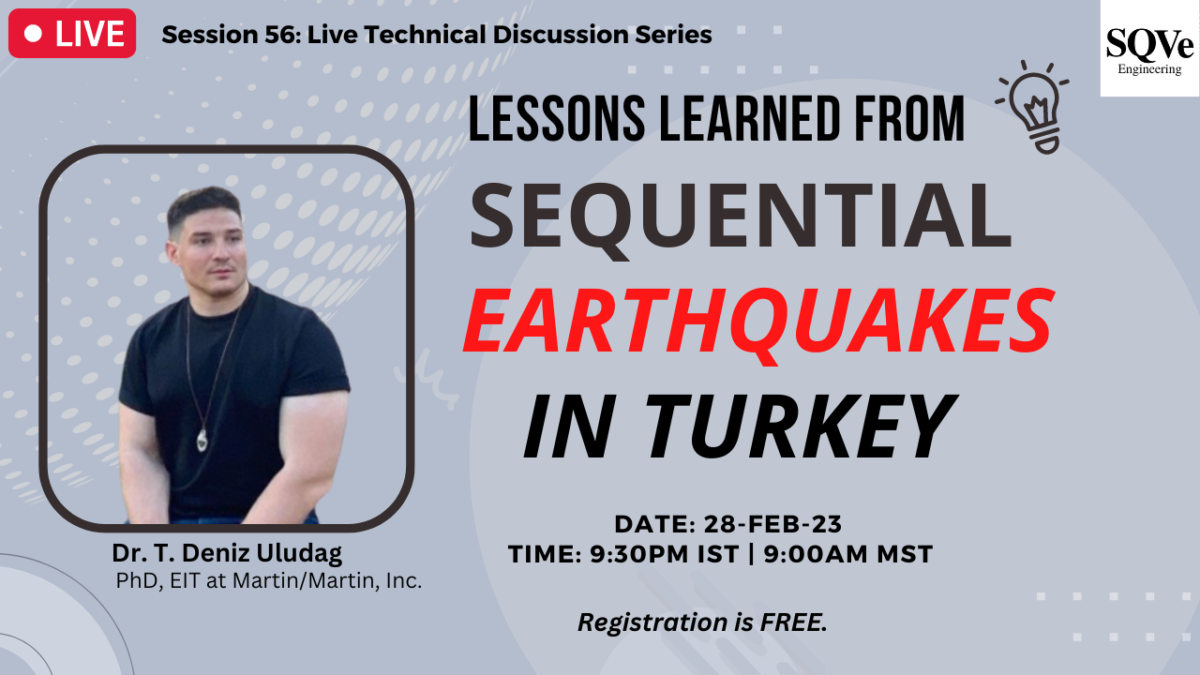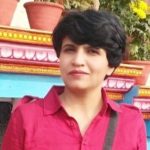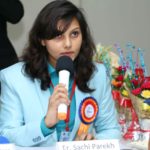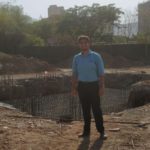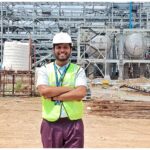INTRODUCTION
LIVE TECHNICAL DISCUSSION SERIES
◼ Sequential of EQs were happened. Magnitude 7.8 happened at 4 am, and Magnitude 7.5 happened at 1 pm (many 6.5 in between). Record from one station indicates that PGA of the first mainshock was around ~0.7g. The spectral acceleration exceeded 2g around 0.5-0.6 seconds. Additionally, the vertical acceleration was ~1.4g.
◼ Over 10,000 buildings were collapsed by the EQs. And many of the buildings were built before 2000. So, they were designed based on old Turkish Code. Collapses were mostly multi-story/mid-rise (5-20 stories). They were mainly concrete buildings.
◼ Collapses should be evaluated in two categories; are collapses before the second mainshock and collapses after the second mainshock (plus aftershocks).
◼ Collapses before the second mainshock: Collapsed buildings were designed based on reduced EQ loads (using response modification factor (R)) by relying on ductility; however, the collapses showed nonductile behavior (brittle). Please, check both ductile and brittle collapse on the graph below. Basic ductile design philosophy is “survive the main shock, and get out of the building safely”. However, the collapses indicate that design reinforcements were didn’t supplied as required by the code. Designers – authority of jurisdictions – constructors should be one mechanism to follow the code instructions.
◼ Collapses after the second mainshock: Many of the collapses were obtained after the second main shock (Magnitude 7.5). The first main shock and aftershocks softened/weakened/hinged buildings, and the second mainshock destroyed most of the softened buildings. This is because of P-delta (large deformation). Why? Because it causes negative tangent stiffness on the buildings, and when it exceeds the plastic stiffness (hinged stiffness), buildings are collapsed due to instability. And the other consideration is fracture due to low cycle fatigue. Ductile elements have a finite accumulative strain capacity.
◼ Important lessons: One of the important lessons is missing sequential shocks specification on every seismic code in the world. It might be great research to study performance-based design for sequential shocks! Other one is determining/reviewing/retrofitting old buildings. Old buildings should get engineering services based on new code provisions.
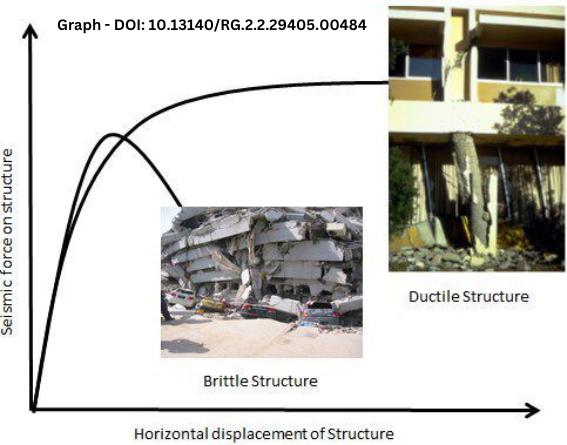
In the upcoming live event, Dr. T. Deniz Uludag will join us for the very important discussion.
Please note that the discussion will be based on initial analysis/thoughts. We may organise more numbers of sessions in the future as and when more detailed analysis is shared by the investigation teams.
It would be great if you can share your specific queries/doubts related to Turkey EQs in advance which would help us to structure the flow of discussion.
In the following registration form, you may share the specific doubts/questions related to the topic or you may share your point of view, discussion points, etc. which may be addressed during the session.
Schedule
Title: Lessons Learned from Sequential Earthquakes in Turkey
DATE : 28-FEB-23
TIME : 9:30PM to 11:00PM IST | 9:00AM to 10:30AM MST
Brief about Expert
Dr. T. Deniz Uludag- Structural Engineer, PhD, EIT at Martin/Martin, Inc.
Dr. T. Deniz Uludag is a PhD in earthquake engineering who was born, raised, educated in Turkey. He has performed a lot of research on Turkey EQs and has connections to the field.
He completed his Ph.D. under the supervision of Dr. Jay Puckett in Architectural Engineering (Structural) at the University of Nebraska-Lincoln (UNL). His specialization is in structural dynamics, performance-based design, and collapse prediction related to providing resilience for operational recovery after high-seismic events.
He is working as an Engineer-In-Training (EIT) in the Structural Department in the Lakewood, Colorado office of Martin/Martin, Inc .
During his academic career at UNL, Dr. Patrick McManus, is a principal in Structural Engineering at Martin/Martin Consulting Engineers, is/was his co-advisor and helped him to develop a novel structural system for seismic loads. This system is practical and directly applicable to professional practice in high-seismic areas. With Dr. McManus’s mentorship and encouragement, he gained an industry perspective paramount for his research and professional development in general. Dr. McManus serves on several AISC technical committees.
HOW TO REGISTER FOR THE EVENT?
Registration is FREE. You may share the specific doubts/queries/discussion points which may be discussed during the session. It would help us to structure the discussion.
___________________________________________________
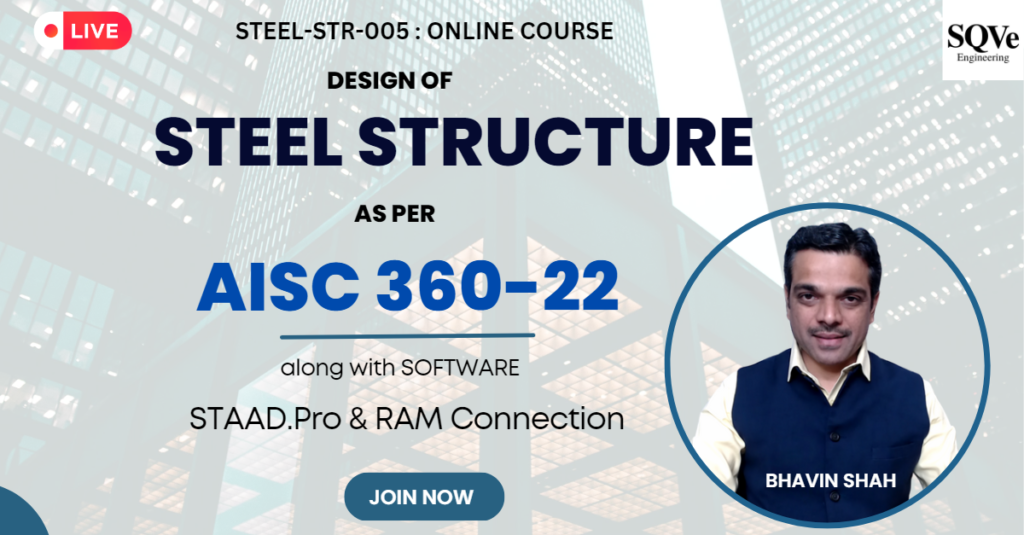
An online course related to design of steel structures as per AISC 360-22 will commence from 15-MAR-23. The course will cover discussion on important clauses of the code AISC 360-22, AISC 341-16, AISC 358-16 as well as application of same in the software STAAD.Pro & RAM connection. The course will cover the important areas such as stability of structures, notional loads, P- delta analysis, direct analysis method, design of compression members with and without slender elements, design of member for bending, design of member for combined forces, design of simple connections, design of moment connections, earthquake resistant design aspects, etc. Click here for more details.
Feedback of few participants for previous online courses”
